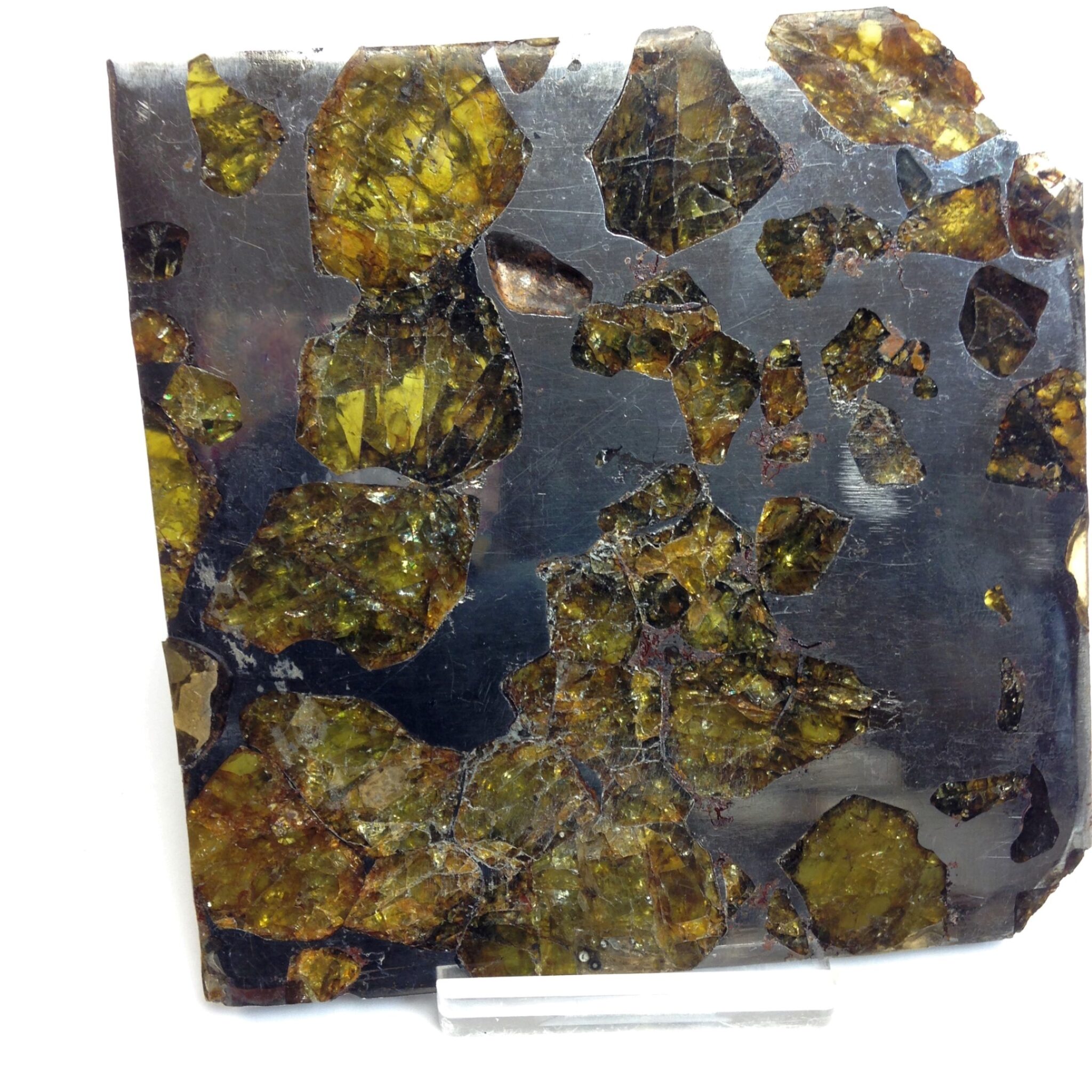

The investigators analyzed polished slabs from the meteorite and prepared thin sections of olivine-rich regions of the Fukang. Their findings were reported in “The Fukang Pallasite: Evidence for Non-Equilibrium Shock Processing” in Lunar and Planetary Science XXXVII (2006). The Fukang Meteorite was investigated at the Southwest Meteorite Centre, Lunar and Planetary Laboratory at the University of Arizona in Tucson. Dante Lauretta saw the Fukang Meteorite at the 2005 Tucson Gem and Mineral Show. What has been discovered about the Fukang Meteorite Some 40,000 meteorites have been found that were not observed on their way to Earth. Some have said that less than one percent of all meteorites are Pallasites.Īccording to the Planetary Science Institute, about 1,100 meteorite falls have been observed and recovered. Pallasite meteorites are exceedingly rare since very few make it all the way through Earth’s atmosphere to land on the planet. If not from a planet, it may have come from an asteroid big enough to have a distinct rock mantle and metallic core - a “differentiated” asteroid. Pallasite meteorites containing olivine are said to come from the mantle of a rocky planet that orbited between Mars and Jupiter. But, as we know from the Fukang meteorite, there is extraterrestrial olivine out there, too. Olivine is the mineral from which the gemstone peridot (August’s birthstone) is formed.Įarthly olivine is present in the planet’s mantle and appears in xenoliths, which are thrown on the surface by volcanic eruptions. Olivine is a rock-forming mineral found on Earth in mafic and ultramafic igneous rocks like basalt, gabbro, dunite, diabase, and peridotite. Pallasites are made up of a network of nickel-iron metal around crystals of olivine, a silicate mineral. Pallasites are a sub-set of stony-iron meteorites. Stony iron meteorites are made up of approximately equal amounts of silicate materials and nickel-iron metals. The Krasnojarsk Pallasite was a 700-kilogram meteorite discovered in Krasnoyarsk, Russia in 1772.

Pallasites are named after a German doctor and naturalist - Simon Peter Pallas - who described the Krasnojarsk Pallasite in 1772. The Fukang Meteorite is a Pallasite meteorite. The finder had removed approximately 20 kilograms from the meteorite before putting it on display. The Fukang Meteorite made its public debut at the Tucson Gem and Mineral Show in February 2005. Less than 10 meteorite falls every year are recovered. The Institute estimates that some 500 meteorites reach Earth annually - most falling into the oceans or onto remote parts of the Earth’s landmasses. There is no record that anyone noticed it arrive. The Fukang Meteorite was not one of those.
#Fukang meteorite windows
A meteoroid that does make it to land is called a meteorite.īacklit slices from the Fukang mass are reminiscent of stained glass windows crafted in the ancient solar system.Īccording to the Planetary Science Institute, about 1,100 meteorite falls have been observed and recovered.

They usually burn up on the way through the atmosphere, never to been seen on land. They are commonly broken off from larger space bodies, such as comets, asteroids, moons, or planets.Ī meteoroid that enters the atmosphere of a planet is called a meteor or shooting star. A total of 31 kilograms (68 lb) of the specimen is on deposit at the University of Arizona’s Southwest Meteorite Laboratory.NASA says meteoroids are “space rocks” ranging in size from mere grains of dust to small asteroids. In 2008 they attempted to sell it at auction at Bonham’s in New York for approximately $2 million but did not receive any bidders. The Fukang pallasite is believed to originate from deep inside intact meteors created during the formation of the solar system about 4.5 billion years ago and very few specimens are thought to have survived their descent through Earth’s atmosphere.Īn anonymous group of collectors currently holds the largest portion which weighs 419.5 kg (925 pounds). Pallasites are extremely rare even among meteorites (only about 1% of all meteorites are this type) and Fukang has been hailed as one of the greatest meteorite discoveries of the 21st century. Named the ‘Fukang meteorite‘, it was identified as a pallasite, a type of stony-iron meteorite, with striking olivine crystals throughout. Photograph via kikootwo on Reddit 4.5 Billion Year Old Fukang Meteoriteīack in the year 2000, a 1,003 kilogram (2,211 lbs) meteorite was discovered near Fukang, a city located in the northwestern region of Xinjiang, China.


 0 kommentar(er)
0 kommentar(er)
